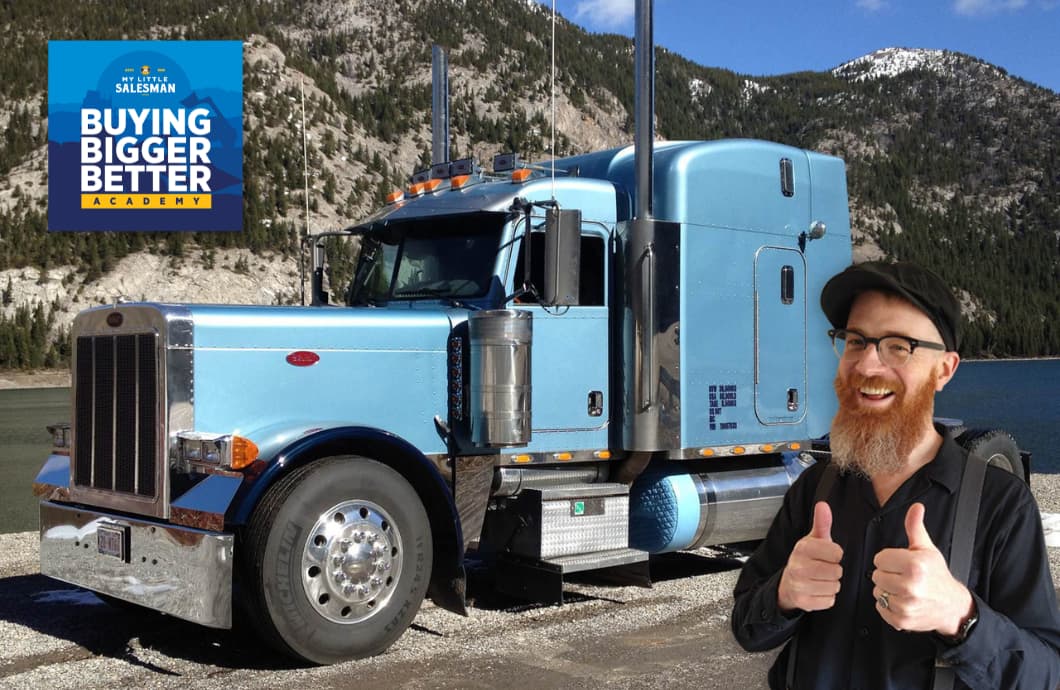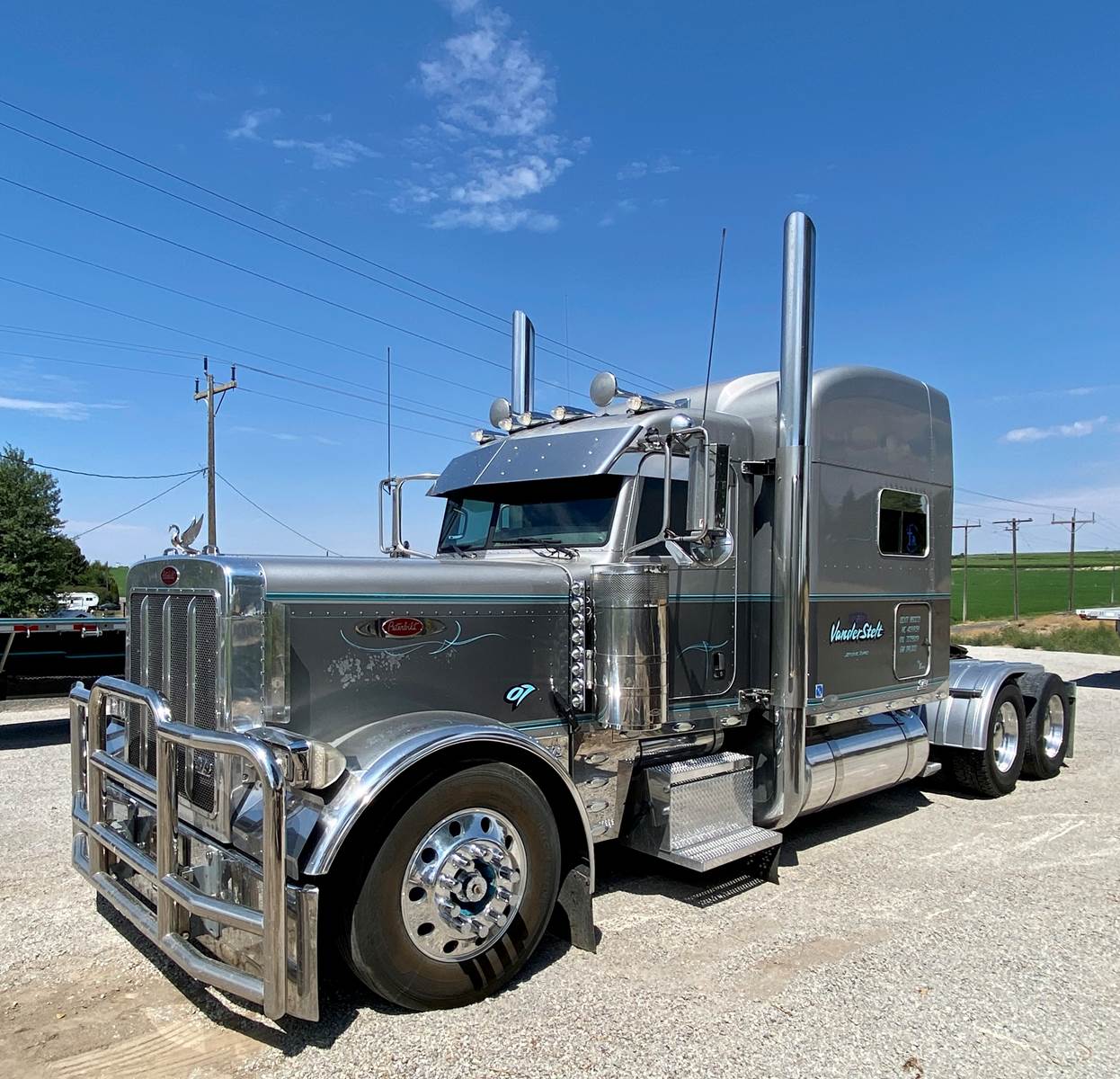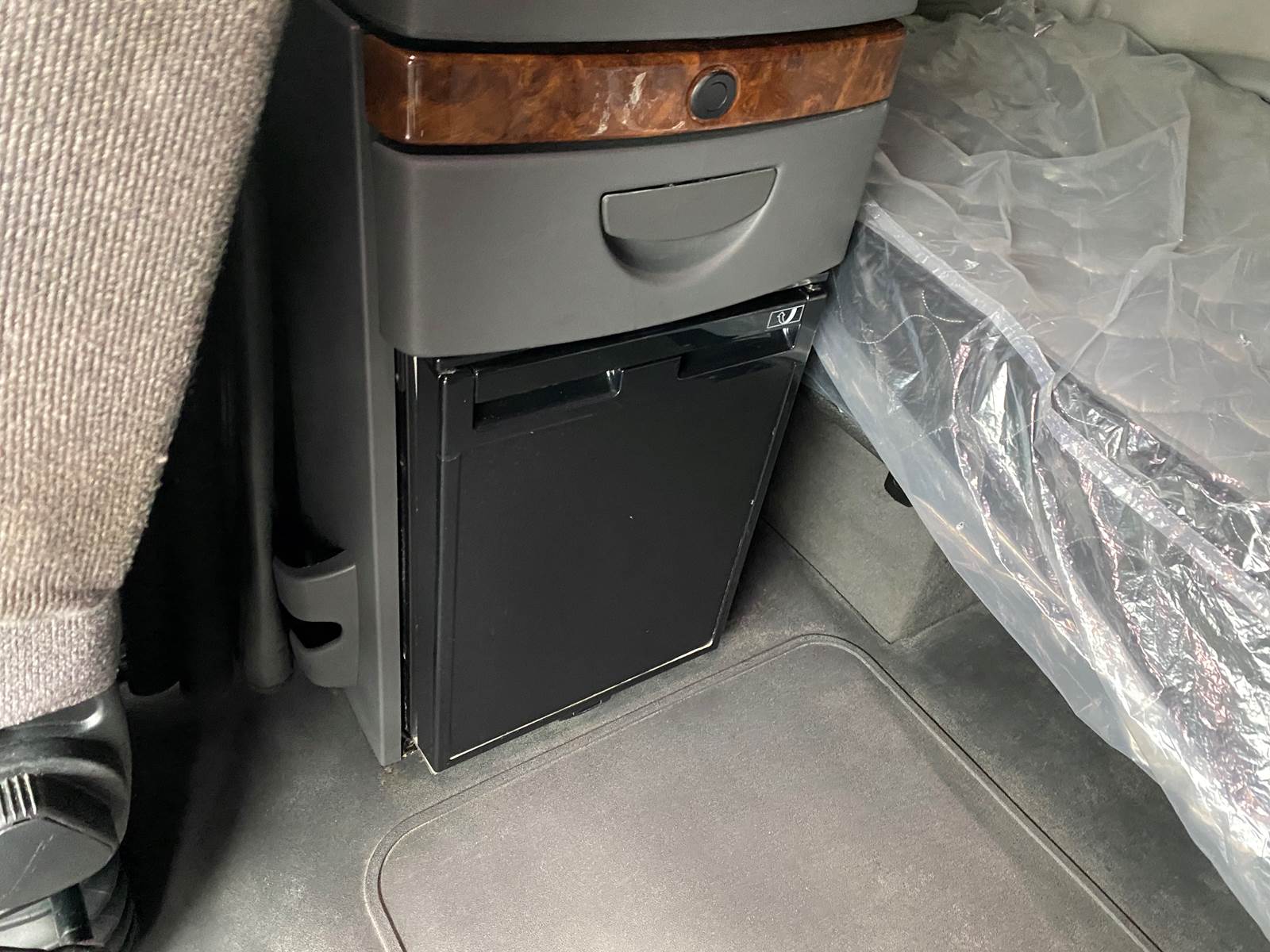Live podcast version:

What is included in this guide:
In this piece, we’re going to answer 17 frequently asked questions about buying, leasing, or owning sleeper cab semi-trucks.
What is not included in this guide:
This buyer’s guide will focus on the sleeper cab and living quarters of the truck. For mechanical specifications and semi-truck capability considerations, you’re invited to consult our Ultimate Semi-Truck Buying Guide.
Let’s hop into some questions!

A sleeper semi-truck, also known as a sleeper cab, is a commercial semi-truck outfitted with a cabin compartment, also known as a truck sleeper, that contains mobile sleeping quarters—including one or two beds. Sleeper semis may also contain a few extra amenities such as a television, mini-fridge, or microwave oven. Truck sleepers may also be used for rest during extended periods of trailer loading or unloading.
Sleeper semi cab designs may vary because many models are built by aftermarket conversion companies in addition to semi-truck manufacturers. This array of options can make shopping for sleeper cabs for sale a bit trickier, this also means a variety of options for those looking to buy or lease trucks.
As before stated, a sleeper cab semi is a truck with, at the very least, a sleeping compartment. A day-cab semi-truck, on the other hand, is shorter and has no such sleeping quarters. Day-cab trucks typically only have driver and single-passenger seating and little to no amenities whatsoever, as they are simply intended to meet the needs of day-time regionally-driving truckers.
When deciding whether you should buy or lease a day cab versus a sleeper cab, it’s important to consider the following:
- What kind of driving will you be doing—long-range or regional?
- What is your purchase budget for trucks?
- What is your budget for fuel?
- How long do you typically have to wait for your trailer to be unloaded or loaded?
If you’re…
only driving regionally
have a lower truck purchase budget
have relatively quick load times
or need to navigate tighter spaces
…a day cab truck may be your best option.
However, if…
your driving takes you far away (such as OTR [over the road] jobs)
loading can take a considerable time
and the budget allows for it
…you’ll likely be best served by a sleeper cab semi truck for sale or lease.
While not common, some regional drivers still opt for sleeper cabs semis. The advantage of this would be having somewhere to rest during an especially long loading or unloading of a trailer. While this sounds nice, the increased weight (and thus reduced fuel efficiency), price of the truck, and diminished maneuverability are enough to make most regional drivers opt for day-cab semis.
Even more than test-driving a car or truck, buying a sleeper semi-truck is a unique shopping experience. On one hand, you’re looking at the vehicle as a work truck—something tasked with hauling trailers filled with all manner of loads over hundreds of thousands of miles. On the other hand, the experience is akin to inspecting an apartment you’re considering moving into. This vehicle has to serve both purposes exceptionally well. Few other vehicles warrant such an examination—perhaps maybe a seafaring vessel or even a space shuttle.
With driver shortages plaguing the trucking industry, many drivers can take their pick of employers. If you’re buying a sleeper cab semi truck with plans of hiring a driver, this should impact your buying decisions. Look at the truck through the eyes of your prospective driver. Would you want to call this truck home, day and night, for the foreseeable future? Though extra amenities may add extra cost and weight to the truck, they may end up being a worthwhile investment in attracting quality drivers and keeping them happy to reduce turnover—which can outweigh the cost of that wider bunk or upper-tier climate control system.
When deciding upon what size of a sleeper cab to choose or what amenities you would like it to include, the total weight should be taken into consideration. A larger sleeper cab will impact your fuel economy and your gross vehicle weight rating—or GVWR. Amenities such as a sink, toilet, or shower of an extended sleeper cab will need to haul water tanks that are quite heavy when full. So, though a larger sleeper cab with additional features seems like a no-brainer, understand that a larger tractor cab is a trade-off that means a much heavier overall truck.
This being said, remember to balance these weight trade-offs with the quality of life for the driver—whether that’s you or someone you wish to keep on your team.

Most sleeper cab semi trucks contain one or two bunks (or “berths”) that are either permanently fixed in position or can fold into the wall when not in use. These cab spaces may also include storage cabinets or pantries for stowing necessary items. Most cabs come equipped with various light fixtures and electrical outlets for charging personal electronics, powering TVs, or small appliances such as coffee makers.
Medium-sized sleeper cabs may contain small counters, stowable tables, or mini-fridge appliances for food preparation or dining.
Large sleeper cabs may contain dining areas, a small sink, and possibly even a small bathroom compartment.
Extended sleeper cabs can usually possess any of the creature comforts that the truck owner desires—including a full bathroom, lounge area, and the like.
The majority of sleeper cab trucks will not have onboard bathrooms—which would typically include toilets or shower stall compartments. Some may have small travel sinks, but these are rare as well. Larger, highly customized, or luxurious extended sleeper cabs may contain full bathrooms, but these are rare.
A standard mattress in a sleeper cab bunk is typically 40 inches ( or around 101 cm) wide by 80 inches ( or around 203 cm) long—or about the same length as a typical single/twin mattress. These can sizes can increase along with cab size.
Depending on the semi-truck manufacturer or aftermarket sleeper cab conversion, sleeper cabs come in various lengths and heights.
- Small sleeper cabs may only supply enough room for the width of the bunk and not much more—about 42 inches (or about 106 cm) deep without much headroom.
- Medium-sized sleeper cabs may offer either a bit more room in front of the bunk or room for a larger mattress—about 61 inches (or about 155 cm) deep with a bit of headroom.
- Large sleeper cabs provide enough room for a bunk and somewhat of a small lounge—about 77 inches (or about 196 cm) deep and ample headroom (also known as a “high top” truck), if not room for an upper bunk.
- Extended sleeper cabs, or “super sleepers” can have RV-like dimensions spanning between 97 inches (or about 246 cm) to 180 inches (or about 457 cm) deep.
An extended sleeper cab, also known as “super sleeper” semis is a semi-truck with even larger living quarters and additional appliances or amenities—much like an RV. Some of these creature comforts may include sinks, small bathrooms, stovetops, and even small washer/dryer machines. Such extended sleeper cabs may be used by two-to-three-person driving crews, couples alternating shifts, or long-term drivers who have essentially made the road their home.
Sleeper cab trucks can utilize various electrical systems. Diesel-powered auxiliary power units (also known as APUs) as well as power inverters are common in many cabs. Older sleeper cab trucks will require the truck’s engine to idle to keep power flowing to the cab’s electrical system, but newer models include separate power modules that can either be externally charged or even solar-powered.
Modern truck heating and cooling systems are typically powered by the truck’s auxiliary power unit, or APU. For many older trucks, even if the bunk HVAC system is separate from the driver’s seat HVAC, if the truck has no APU, it likely utilizes the same compressor as the engine and therefore requires the engine to idle any time the HVAC system is in use.
Adequate insulation of a sleeper cab semi truck is crucial to properly manage sound and cabin climate. For driving teams (one person driving while another sleeps), reducing the road and wind noise within the sleeper cab is essential for getting proper sleep. Even while parked, wind and highway noise can be quite significant. Also, insulation helps to increase the energy efficiency of any climate control system.
For both of these purposes, various specialized forms of insulation exist. Products such as Dynamat and Hushmat components are designed to decrease sound. Thermablok Aerogel, a product originally designed for space shuttles, is an insulation material that utilizes fiberglass by breaking thermal bridging—or a path of least resistance for heat. This material is effective, though can be fairly expensive. Many other very clever insulation methods have been developed via trucker ingenuity over the years.
Getting an exact price for sleeper semi trucks can be tricky due to “call for price” marketing. Depending on the size and amenities, a semi-truck conversion process to install a sleeper cab averages about $60,000. This does not include the price of the semi-truck itself. A new sleeper cab semi truck—including the truck and sleeper cabin—upwards of $250,000. Custom sleeper trucks can reach $300,000 and more. Depending on the condition of the truck and sleeper cab, used sleeper semis can range in price anywhere below about $200,000. Again, due to the variations in truck age, mileage, amenities, sleeper cabin sizes, and other factors, the price will vary as well.
To find a quality new or used sleeper semi truck for sale, connecting with multiple dealerships as well as private sellers is the best way to expand your options. Fortunately, doing so is easy with help from the commercial vehicle marketplace professionals from My Little Salesman. You’re invited to navigate to our sleeper semi truck online marketplace to look through thousands of truck listings. Use the intuitive filters to narrow your search, including shopping for sleeper semis near you.